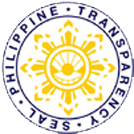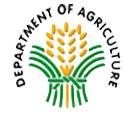News Articles
| Candon remains top producer of Virginia tobacco, gets highest share from tobacco excise tax in 2016 |
Candon City, Ilocos Sur is the highest recipient of shares from the 2016 collection of excise tax from Virginia-type cigarettes with P476.032 million, which accounts for 11.23% of the total percentage shares of the local government units (LGUs) in Ilocos Sur.
This is based on Local Budget Memorandum 79 issued last June 14 by the Department of Budget and Management, that released a total of P15.81 billion to tobacco-producing LGUs nationwide, pursuant to Republic Act (RA) 7171 and RA 8240, as amended by RA 10351 or Sin Tax Reform Law. Of the amount, P12.88 billion was generated by from cigarettes, and P2.93 billion by tobacco.
Pilar, Abra generated P427.766 million excise tax from cigarettes in 2016 or 43% of the total LGUs shares in the province, followed by Claveria, Misamis Oriental with P392.255 million and Balaoan, La Union with P358.434 million, or 99.63% and 47.47% of the total LGUs shares of their respective provinces.
Rounding up the top ten are six municipalities of Ilocos Sur: Cabugao with P340.68 million; Sta. Cruz with P331.653 million; Magsingal with P306.09 million; San Juan with P287.437 million; Salcedo with P280.286 million; and San Emilio with P279.95 million.
The three highest recipient of shares from the 2016 collection of excise tax from Burley and native-type cigarettes are three municipalities in Isabela: Quirino with P272.857 million, or 20% of the total LGUs shares in the province, followed by Roxas with P201.985 million (15.35%); and Aurora with P199.804 million (15.18%).
Rounding up the top ten are San Jose, Occidental Mindoro with P163.767 million; Narvacan, Ilocos Sur with P162.588 million; Mallig, Isabela with P143.905 million; Reina Mercedes, Isabela with P140.791 million; Ilagan City, Isabela with P92.526 million; Nagbukel, Ilocos Sur with P67.964 million; and Sta. Maria, Ilocos Sur with P59.434 million.
Per DBM guidelines, the funds are earmarked for the promotion of self-reliance by tobacco farmers through cooperative projects; livelihood projects focusing on developing alternative farming systems; post-harvest and secondary processing facilities; and infrastructure projects such as farm-to-market roads.







